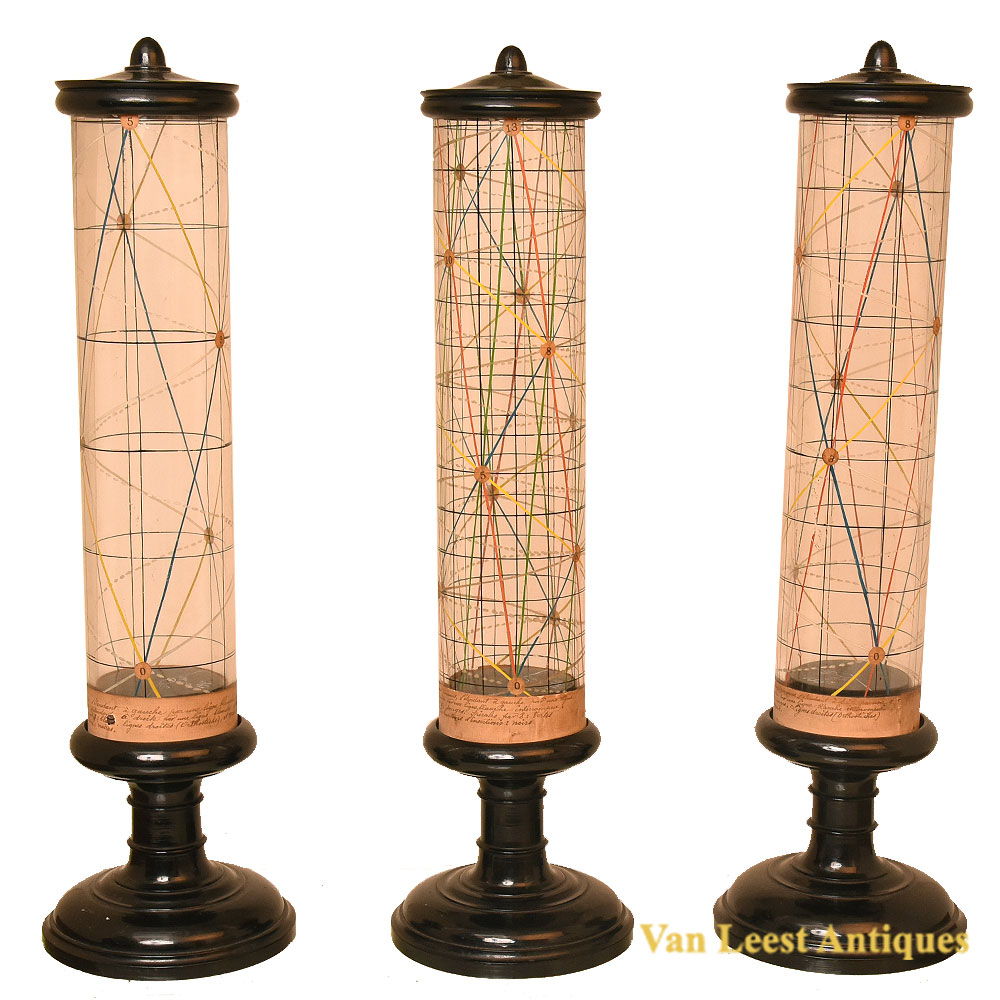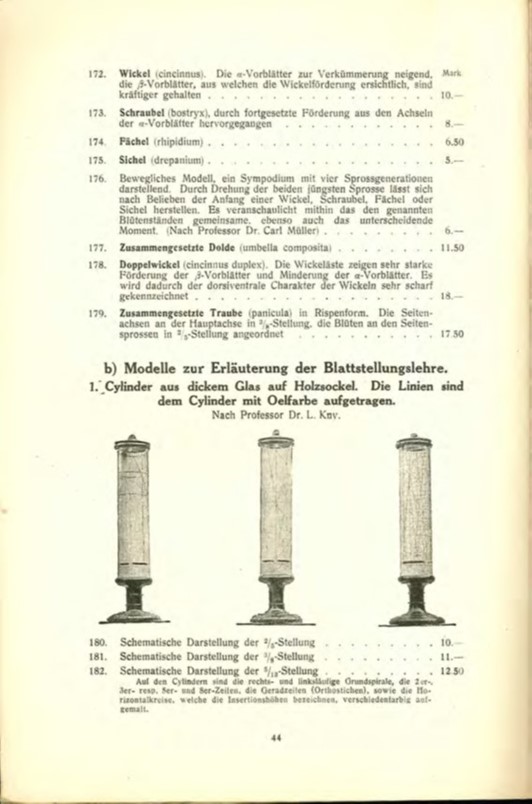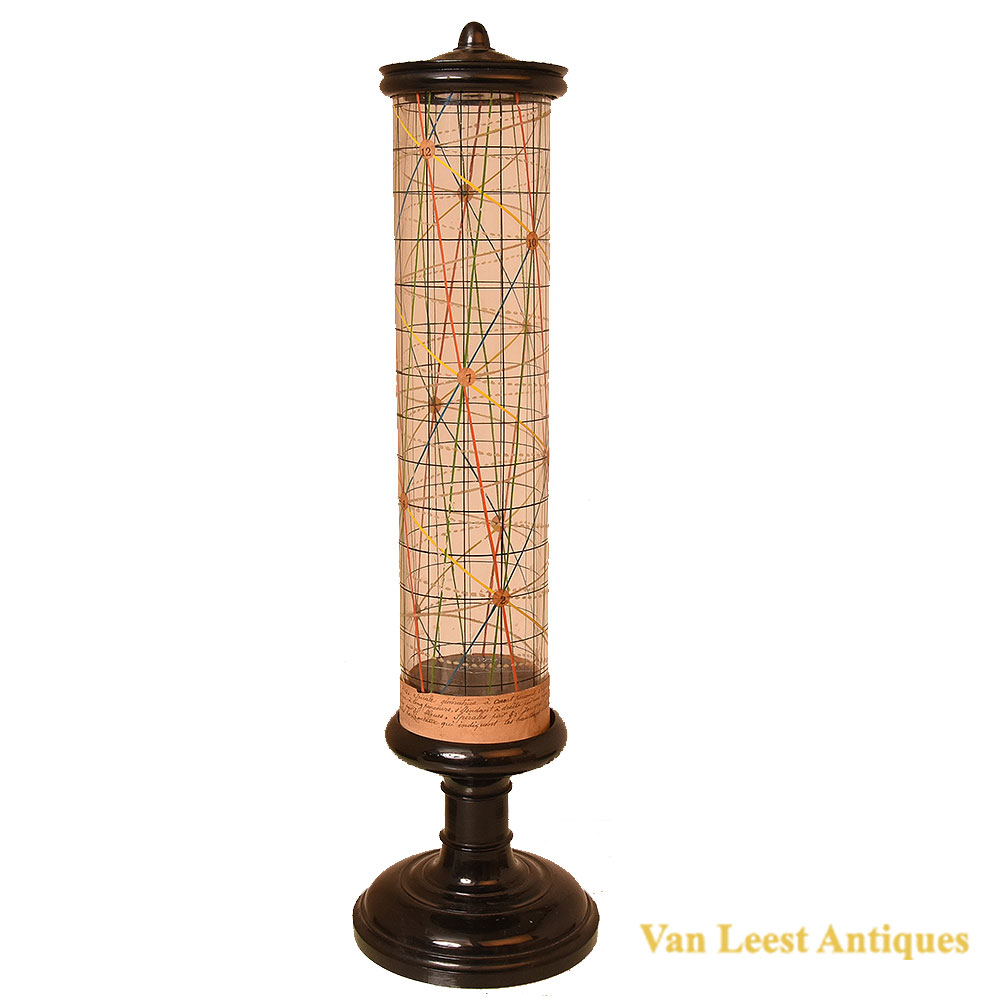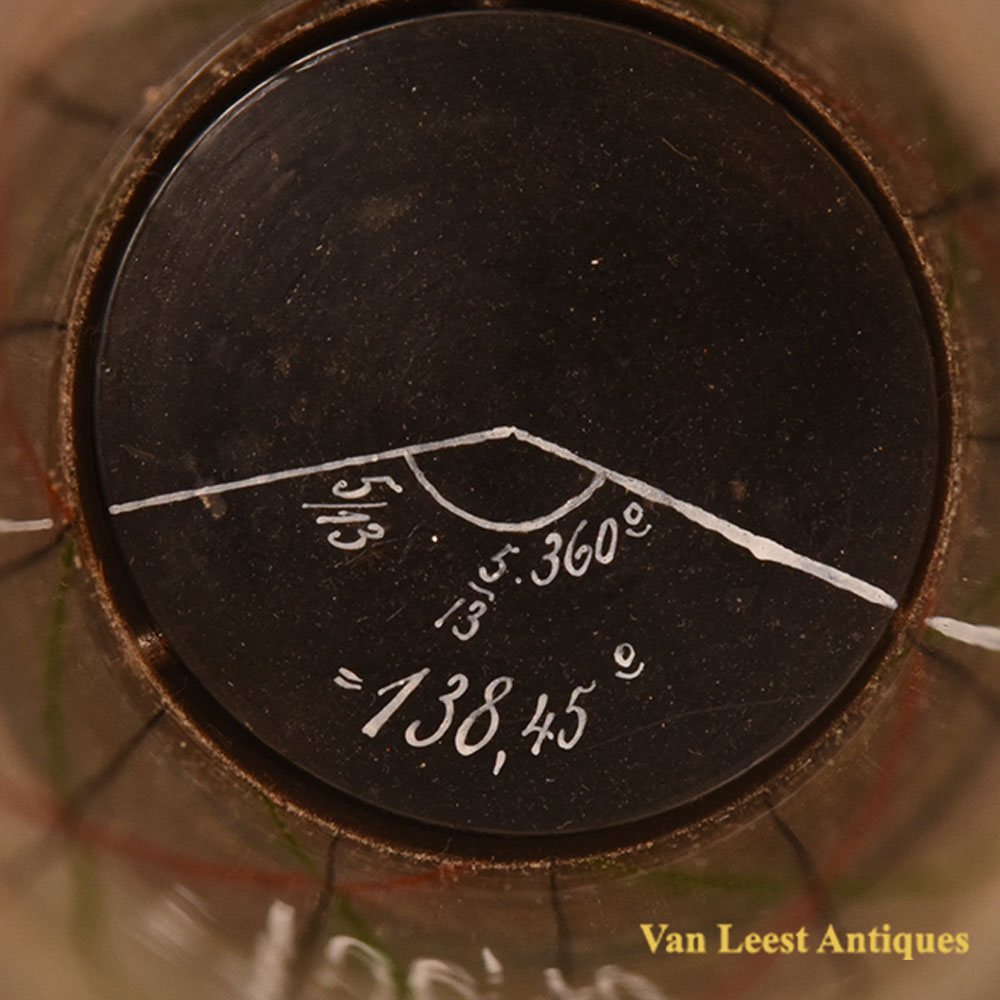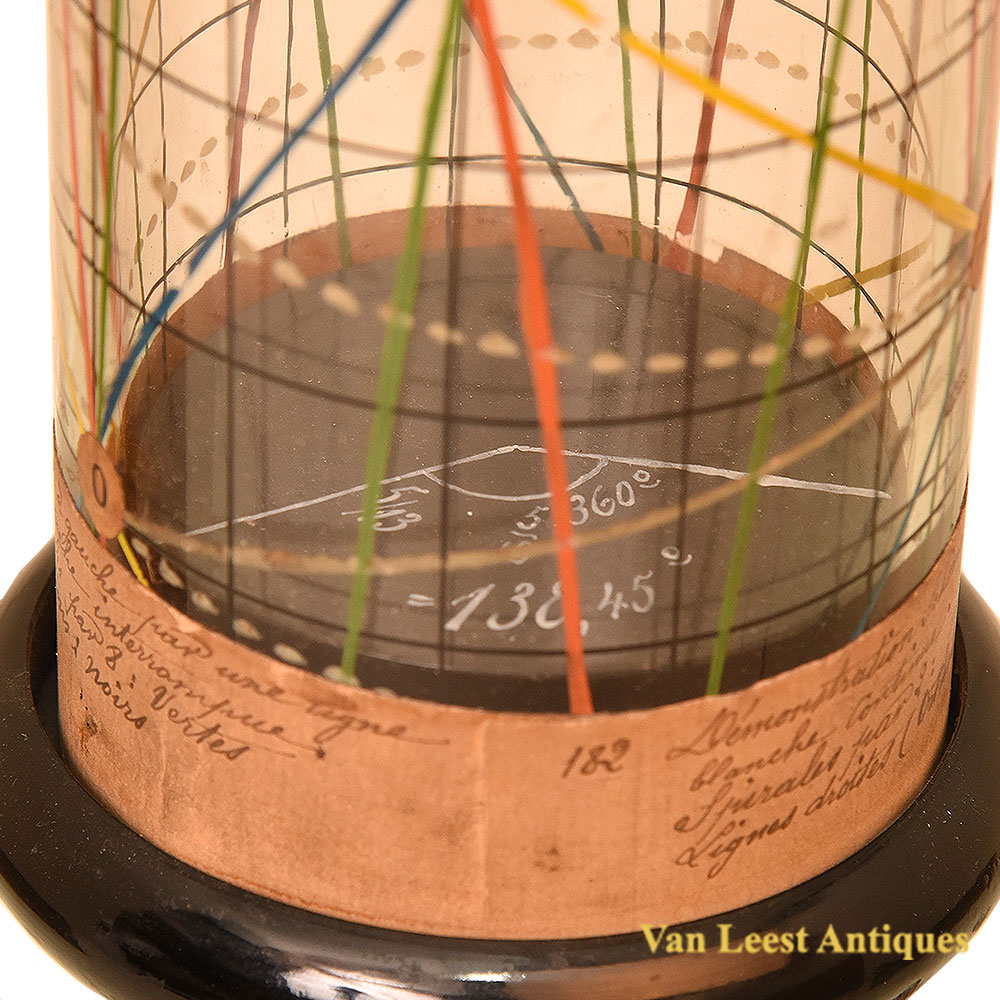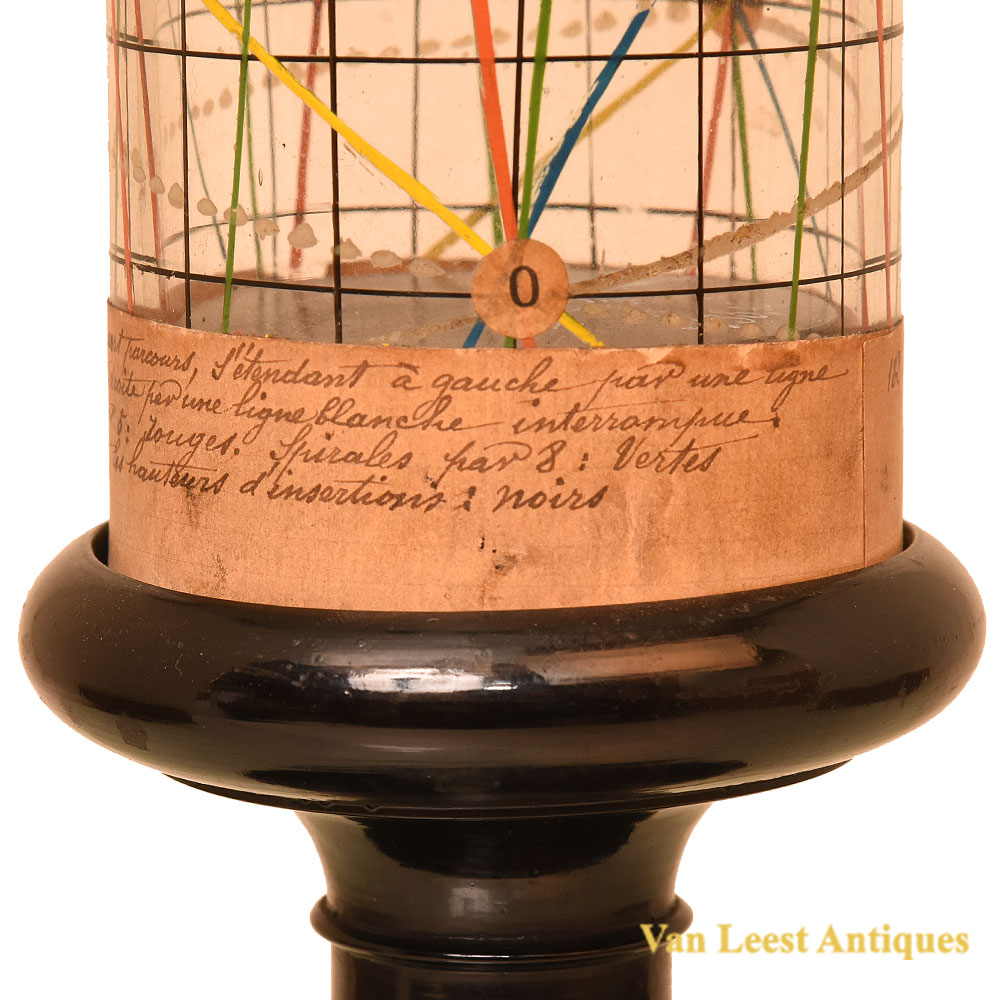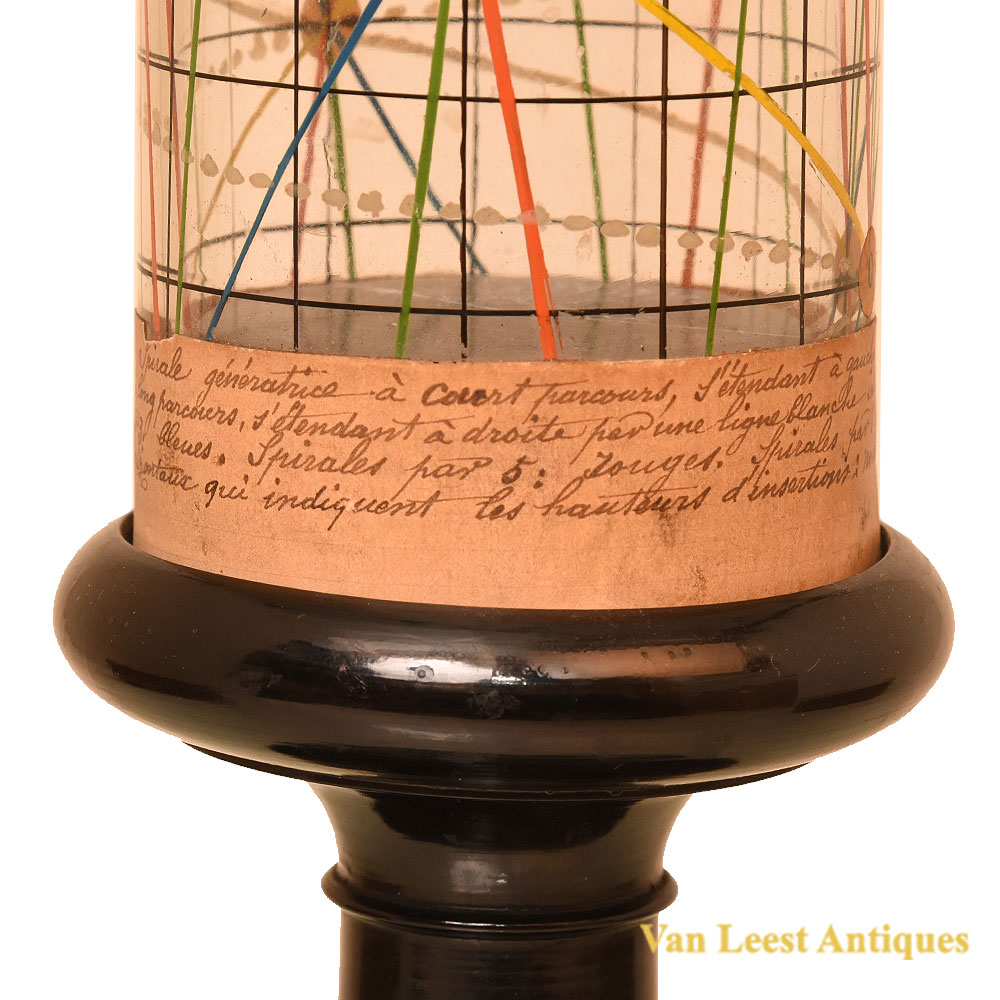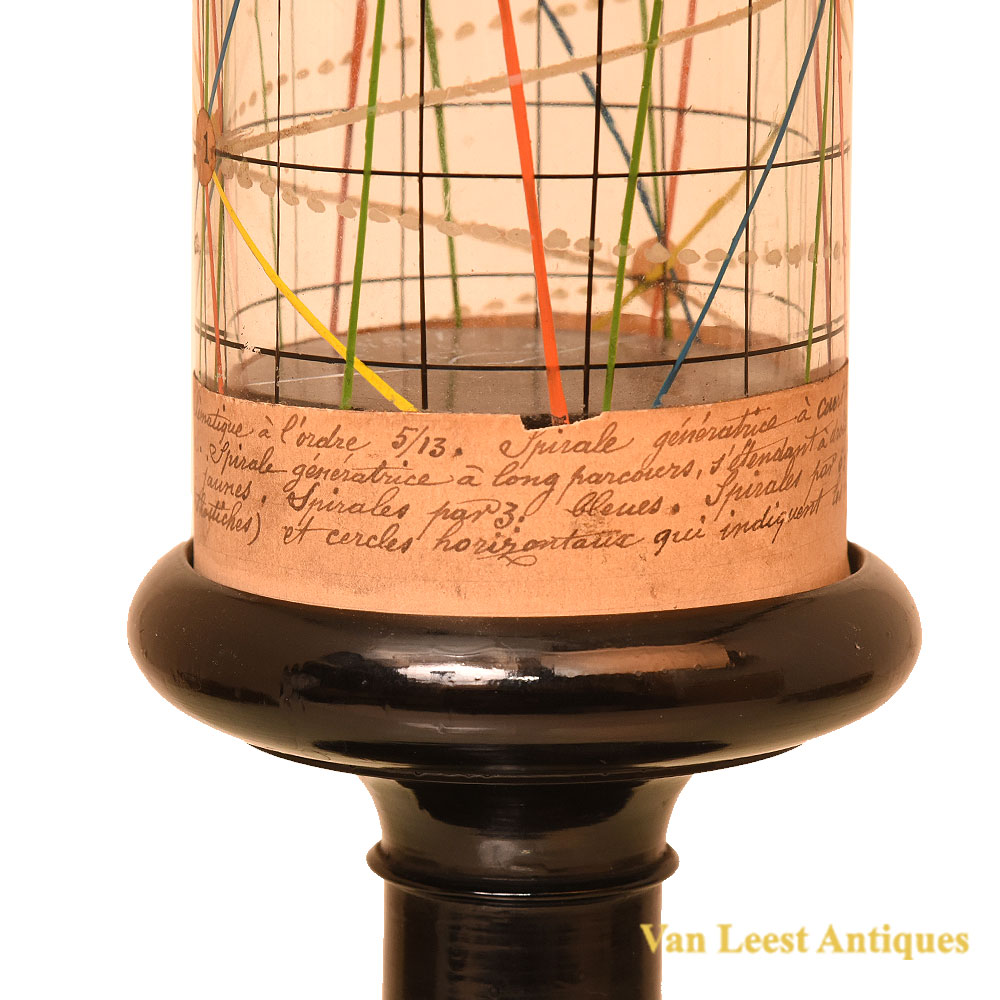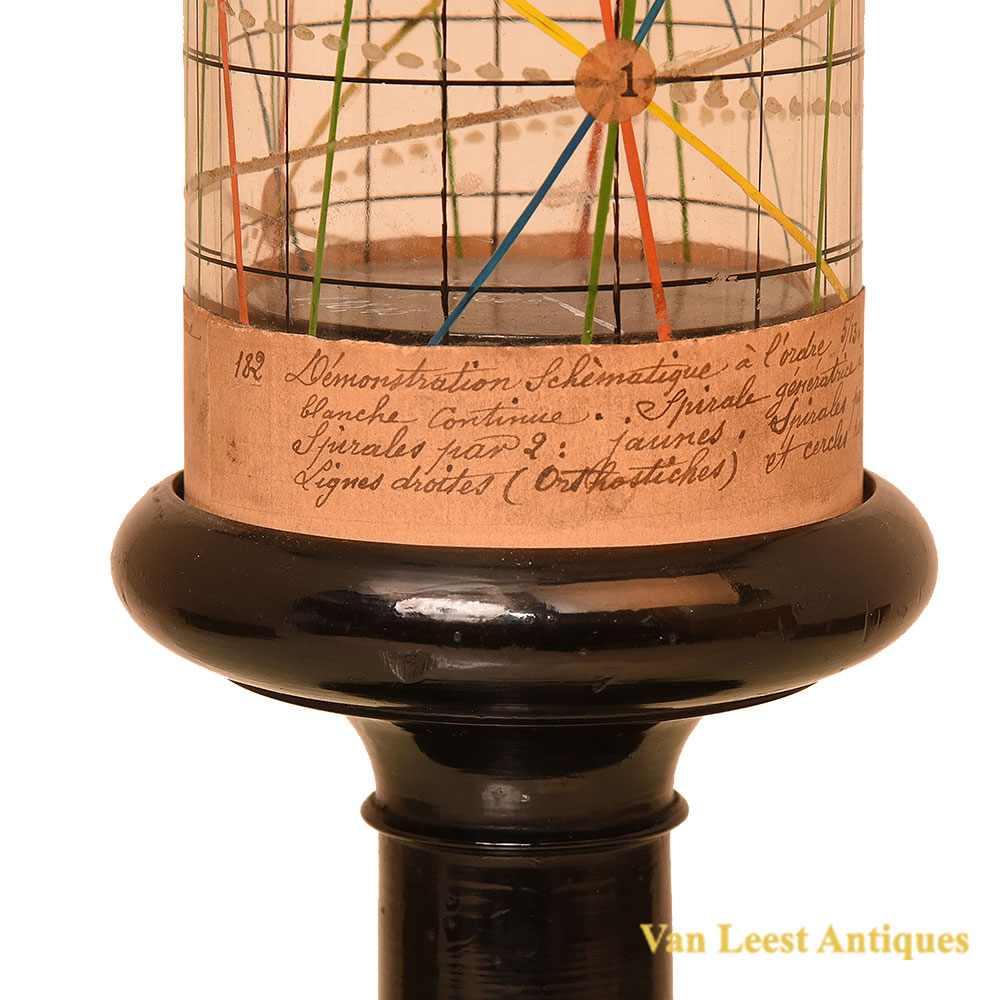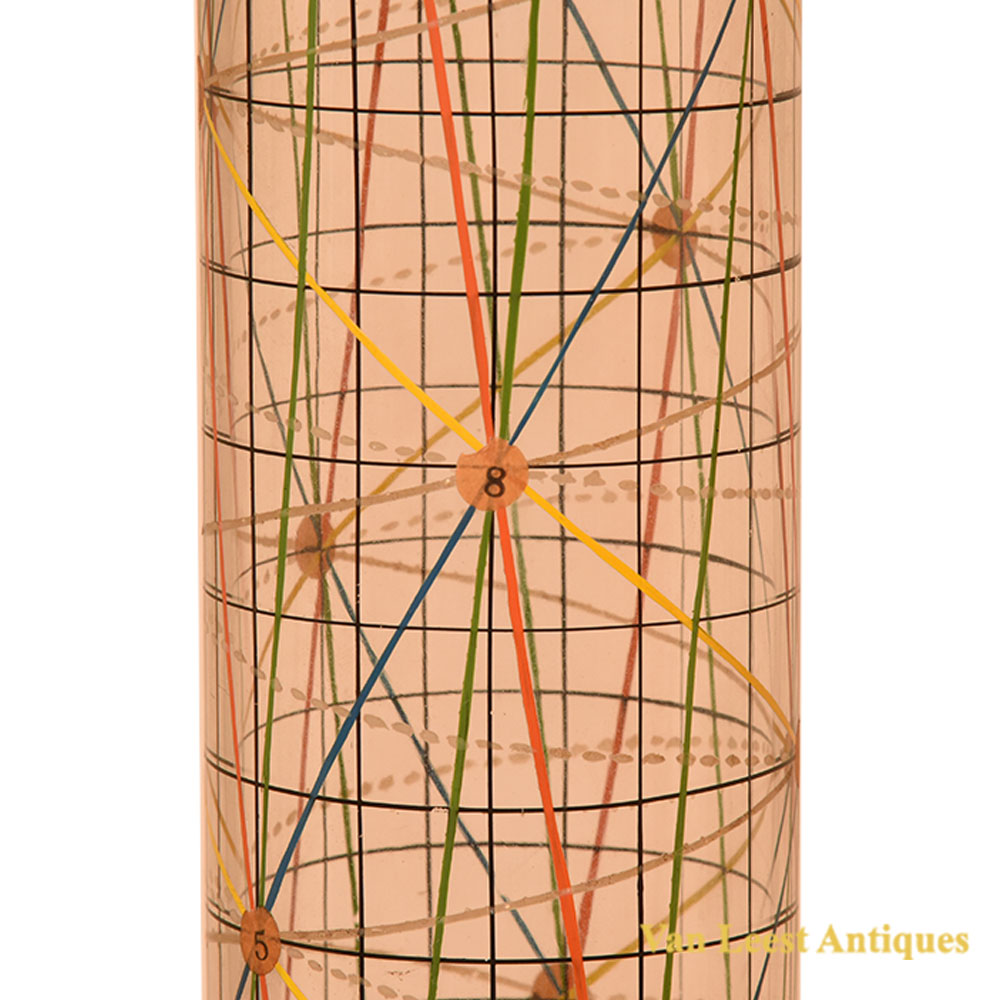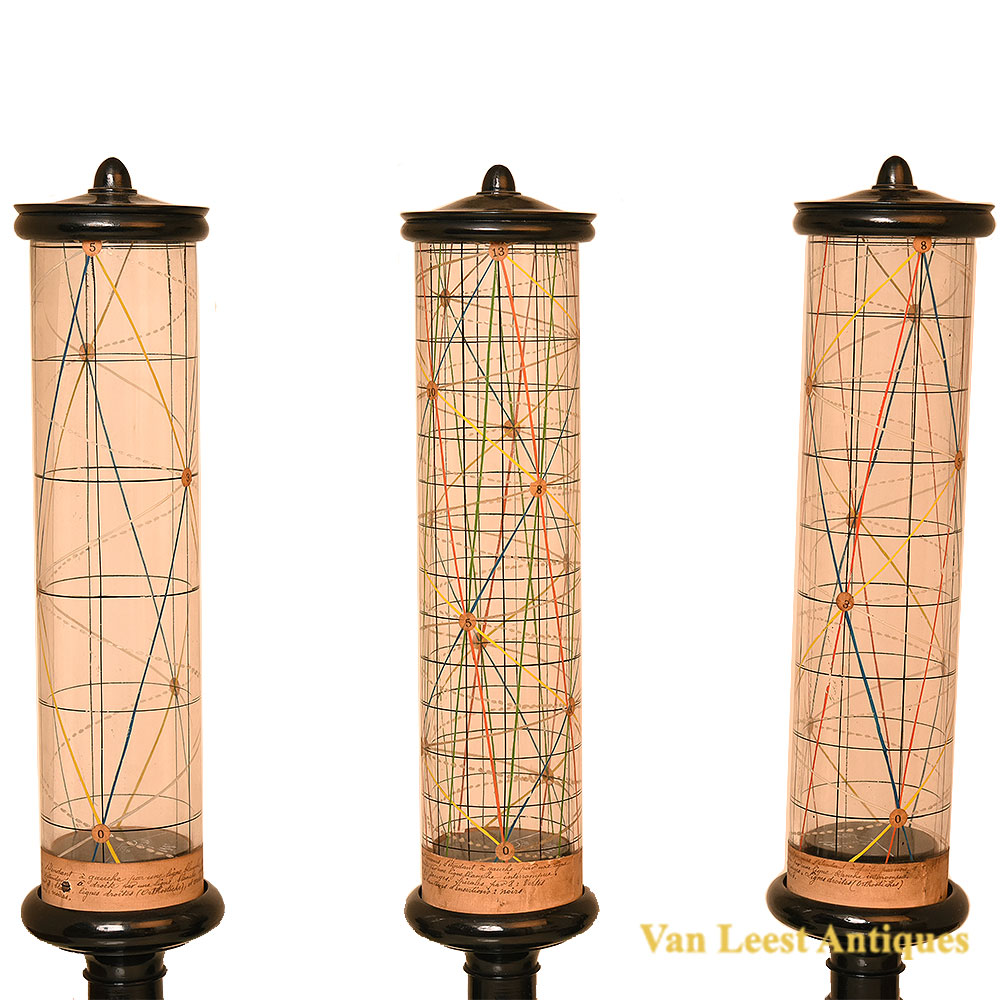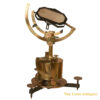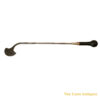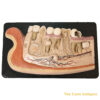Description
Three Brendel models to explain Dr. Kny’s leaf arrangement theory. The models are glass cylinders with painted graphics allowing to visualize the first formal geometrical representation of the arrangement of leaves on a stem by means of a network of points (lattice) on a cylinder. On top and on the bottom turned black painted wooden caps.
Leopold Kny was born in Breslau on 6 July 1841, which was also the home of the Brendel factory. At the age of 17, Kny graduated from high school and began to attend the University of Wroclaw. He was inspired by Heinrich Göppert and Ferdinand Cohn, and he decided to devote himself to the study of botany. In 1860, he took up studies in Munich under the direction of Carl Nägeli. He later did academics in Berlin, where he was a pupil of Alexander Braun. He began to collect algae samples from southern Europe for his studies.
Between 1874 and 1911, Kny produced his Botanische Wandtafeln. These were a series of 117 botanical wall charts known for their high level of detail, they were widely used in classrooms long after his death. The Botanische Wandtafeln were accompanied with a 554-page textbook for explanatory purposes. Kny’s wall charts are still revered today, and they are housed in several different museums.
Some early scientists—notably Leonardo da Vinci—made observations of the spiral arrangements of plants. In 1754, Charles Bonnet observed that the spiral phyllotaxis of plants were frequently expressed in both clockwise and counter-clockwise golden ratio series. Mathematical observations of phyllotaxis followed with Karl Friedrich Schimper and his friend Alexander Braun’s 1830’s work, respectively; Auguste Bravais and his brother Louis connected phyllotaxis ratios to the Fibonacci sequence in 1837.
The three models are separately labeled:
Model No. 180: Label laminated to the lower edge of the cylinder with the following words: “Short course generating spiral extending to the left by a continuous white line / Long course generating spiral extending to the right by an interrupted white line / Spirals by 2: yellow. Spirals by 3: blue. Spirals by 5: red. Straight lines (orthostiches) and horizontal circles indicating the heights of insertions: black.”
Indications in white inscribed in the center of the tube: “360° = 2/5 = 144°”.
Label laminated under the foot with #440315.
Model No. 181: Label laminated to the lower edge of the cylinder with the following words: “Schematic demonstration to order 3/8 (after Kny) Short path generating spiral extending to the right / by a continuous white line. Generating spiral with long path extending to the left by an interrupted white line / Spirals by 2: yellow. Spirals by 3: blue. Straight lines (orthostichs) / and horizontal circles that indicate the heights of insertions: black.”
Indications in white inscribed in the center of the tube: “360° = 3/8 = 135°”
Label laminated under foot with #440316.
Model No. 182: Label laminated to the bottom of the cylinder with the following words: “Schematic demonstration to order 5/13. Generating spiral with short course, extending to the left by a continuous white line. Generating spiral with long path, extending to the right by an interrupted white line. / Spirals by 2: yellow. Spirals by 3: blue. Spirals by 8: green / Straight lines (orthostiches) and horizontal circles indicating the heights of insertions: black.”
Indications in white inscribed in the center of the tube: “360° = 5/13 = 138,45°”.
Label laminated under the foot with #440317.
The three models were are original made by the Brendel company from Breslau. The labels 180-182 refer to the Brendel catalogue which names the same three illustrated models:
Models for explaining leaf arrangement theory.
Cylinder made of thick glass on a wooden base. The lines are painted on the cylinder with oil paint. According to Professor Dr. L. knv.
180. Schematic representation of the 2/5 position …. 10.
181. Schematic representation of the 3/8 position …. 11.
182. Schematic representation of the 5/13 position …. 12.50
On the cylinders, the right- and left-handed basic spirals, the 2, 3, and 5 respectively 8 lines, the straight lines (orthostiches), as well as the horizontal circles indicating the insertion heights, are painted in different colors.
German text:
Modelle zur Erläuterung der Blattstellungslehere.
Cylinder aus dickem Glas auf Holzsockel. Die Linien sind dem Cylinder mit Oelfarbe aufgetragen. Nach Professor Dr. L. Kny.
180. Schematische Darstellung der 2/5 Stellung …. 10.
181. Schematische Darstellung der 3/8-Stellung …. 11.
182. Schematische Darstelung der 5/13-Stellung …. 12,50
Auf Den Cylindern sind die rechts- und linkslaufige Grundspirale, die 2er, 3er- resp. 5er und 8er- Zeilen, die Geradzeilen (Orthostichen), sowie die Horizontalkreise, welche die Insertionshöhen bezeichnen, verschiedenfarbig aufgemalt.)
Height: 49 cm, diameter 14 cm.
Find out more on www.vanleestantiques.com
Ask the Dealer
Dealer information
 Van Leest Antiques
Van Leest Antiques
Van Leest Antiques
Van Leest Antiques, based in Utrecht in the Netherlands, specialises in antique scientific and medical instruments. Their collection covers mainly scientific and medical antique instruments: barometers, globes and planataria, nautical instruments, anatomical models, and pharmacy items. Toon Van Leest travels regularly in Europe and visits trade fairs, auctions, and antique dealers to collect stock and to find pieces to fulfil his clients' unusual requests.
As well as being an avid antique collector and dealer, Toon Van Leest is also a dentist. He believes that antiques are a stable investment, not reliant on trends or fashion, and have truly lasting value. Above all, he says, antiques are timeless and never lose their beauty.




